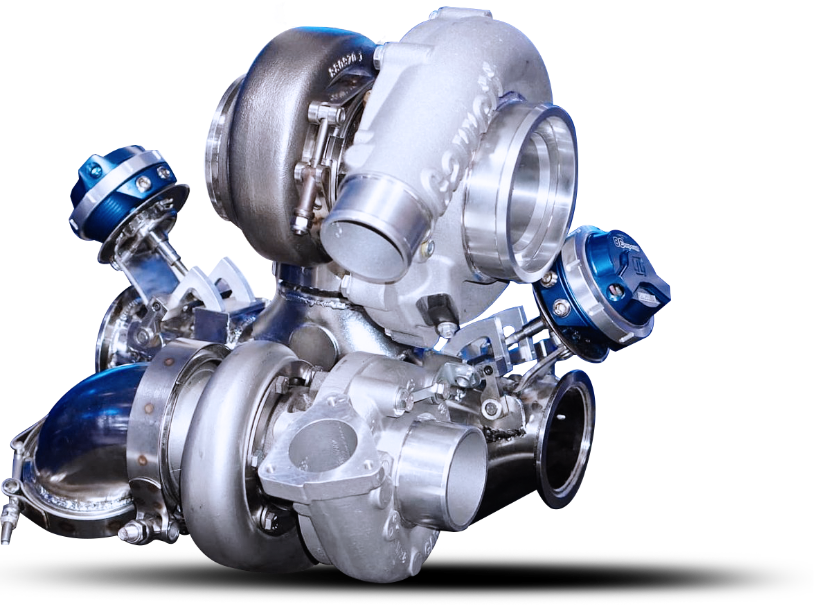

With this apparatus and in its designed intent, it capitalizes on changes of pressure, temperature, and volume with intelligently designed and placed bypass valves using 3 specific gas laws. First being Boyle’s law, stating that pressure and volume of a gas have an inverse relationship meaning if volume increases, then pressure decreases and vice versa. Second is Charles law, which states, in a flexible container, the volume of a given mass of gas varies directly with the absolute temperature of the gas when pressure is kept constant meaning if volume goes up, temperature will go up. Third, being Gay- Lussac’s law, which states, in a ridged container, the pressure of a given mass of gas varies directly with the absolute temperature of the gas. Although Charles’ and Gay-Lussac’s laws are very similar, they are calculated using different conditions. The apparatus utilizes both these laws because it is both flexible and ridged at different areas in operation.
First let’s discuss Boyle’s law. In the beginning of engine operation, all the exhaust gas is directed to the small frame turbocharger. As the load increases in the engine, the volume provided will increase but will be restricted by the small-framed turbocharger. At this point, pressure will build up as the allowed volume is limited. The spring rating in the actuators should be relative to your small-framed turbocharger’s turbine map’s pressure ratio’s effective range. The 2 bypass valves are in line with the exhaust gas flow provided by the applied engine. As pressure is built inside the channels leading to the small turbocharger, to a point where it is equal to the actuator’s spring tension, the valves begin to open, volume is allowed to increase, decreasing pressure. It is because of this specific law the valves will only open incrementally, where volume supplied equals spring pressure until additional volume restriction is created by the secondary turbocharger.
Due to the design of the valves, they allow an uninterrupted full flow path towards the larger turbocharger when required. Moreover, due to the placement of these valves, the apparatus capitalizes on the velocity of exhaust gas flow throughout operation. This allows the larger turbocharger to take precedence of the continuing increase in volume of exhaust gas that the applied engine provides. The pressure will ultimately increase relative to the secondary turbine housing’s flow capabilities provided on its map. Required variables to determine this are expected peak horsepower, cubic inch displacement, peak engine RPM, and expected weather conditions the vehicle will be driven in (temperatures and altitudes.) Also, remember you can utilize a wastegate as a safety precaution if you are unsure of your turbocharger.
Now let’s elaborate on where Charles’ and Gay-Lussac’s laws apply in the operation of the apparatus. Charles’ law can be observed during the operation of the valves at which point the gas is being dispersed among 4 conduits in varying volumes based on the valves position. Gay-Lussac’s law comes into effect in two different stages of operation. First, when the valves are closed, the temperature will be relative to the pressure inside those fixed channels. Second is when full flow is achieved, as the temperature and volume inside the manifold will gradually increase, relative to the expected pressure dictated by the secondary turbocharger’s turbine map, where it uses all the applied engines gas flow. Keeping the valves open in the full flow state and not allow them to shut at any time during said state. The system is designed to make sure there are no erratic changes from what is given to it in terms of temperature, volume, velocity, and pressure when turbo utilization is optimized per the application. selection.
The Hlava Sequential-Turbocharging Manifold is an apparatus that allows you for the first time ever to use two different frame size turbochargers effectively and efficiently in sequence based on the end-user’s intent. In our testing, we applied the GT2554R as our primary turbocharger to attain an extremely low load response and paired it with the significantly higher corrective airflow capabilities of the Garrett G30-900 turbocharger in reverse rotation with the 1.21 A/R turbine housing. The intended reasoning for this pairing was done to signify the fluidity of the apparatus. Showing that even in a primary turbocharger application as small as the GT2554R that according to Garrett is designed for an engine no larger than a 2.2L, in single form, can be utilized on an engine as large as our 3.1L V6 which is designed for airflow capabilities well above what even a twin GT2554R would be able to provide. We did this by pairing it with a turbocharger capable of flowing 3 times the amount of corrective airflow efficiently, and showing through data that synchronization between them could be achieved AND without over-revving the GT2554R. Using the GT2554R in our application has significant benefits in fuel economy and vehicle emissions due to its near instantaneous responsiveness while applied to an engine that under low load receives all the exhaust gas which in turn provides highly effective and efficient air delivery minimizing the workload of the engine. Moreover, because it is used in sequence with a significantly larger turbocharger in the G30-900, the applied engine can still receive the corrective air flow the g30-900 is designed to provide efficiently under increased load conditions.
If you wanted to increase low end power potential, you would of course want to utilize a larger primary turbocharger if your top-end power desire was relatable to that of the air flow capabilities of the G30-900. The reason is, the low-end power capabilities are limited to that of your primary turbocharger, and because of this fact, a drastic increase in low/low-mid load power capabilities is not the intent of our tested application which was to prove functionality, relative to what you would see in a high performance application in terms of power that uses turbocharger(s) which provide similar limits in corrective air flow to that of the G30-900. We’ll go through a couple commonly used traditional applications and how the apparatus can provide increased performance results relative to what you currently see when guidelines are followed.
If you currently run a Twin-Turbo setup, this specific paragraph will provide a better understanding of how the apparatus can benefit you. Have you ever had a random thought about what kind of turbo response you could generate if you had all your cylinders feeding one of the two turbos instead of both? Of course, in your mind you think “well, yeah, but then I got virtually no top-end power……” Well, what if you could place another turbo to operate sequentially after it, that has a compressor air flow rate comparative, or even increased relative to your twins combined? Now for the first time ever you can! If you currently have a twin setup, you can generate the rapid turbo response by applying one of those two turbos you currently are using as your primary while taking advantage of the power capabilities of what a large single could provide after it! With this apparatus pair a primary (smaller) turbocharger that can flow enough air to reach the low-end power capabilities you want with a larger framed secondary turbocharger that can flow enough air to reach the top-end power you desire. And IF one of those twins can provide you with the bottom-end power potential you’re looking for then you only need to invest in one larger secondary turbocharger, not both! This pairing provides an unrivaled turbo response compared to that twin-setup of yours in lower gears and with less load requirements while providing the capability to achieve the same if not increased top end power capabilities depending on your applied secondary turbocharger.
For those running big singles. Either keep your turbocharger in its current form, as is, or increase your turbine housing to promote fluidity in exhaust flow throughout your RPM band (strongly recommended if you use a significantly smaller housing to generate a mid-rpm response) and place a significantly smaller turbo in the primary location that generates the low-end power you want the ability to achieve and experience a significant increase in responsiveness and low-end power relative to your previous application. Follow the Satisfaction Guaranteed guidelines and you won’t be disappointed.
As much as we love cars of all types here at AMF, this is not a one-trick pony! The Hlava Sequential-Turbo Manifold was designed with the intention of increasing all-around performance for all internal-combustion engines. This means, with the help of this revolutionary apparatus, the benefits turbochargers supply are maximized while making them no longer restrictors by nature to the engine they are applied to. Instead, it allows them to function the way they were originally intended; to help engines get extra power with no extra work, translating to running more efficiently! With the help of this manifold, you can have a faster turbo response, translating to better acceleration, increased gas mileage, lower emissions and better overall performance throughout the RPM band than any current forced induction setup will allow. Whether it’s for a gasoline engine or a diesel, this manifold is the perfect way to help maximize the engines capabilities from a forced induction standpoint. So, for all those big rigs, there could not be a more perfect choice for those engines! Why not maximize an engines output and save fuel while doing so? All it could do is help you get to your destination faster by not having to stop at the fuel stations as often and help you get/keep some extra money in your bank! Light-commercial vehicles? Heavy-commercial vehicles? DOESN’T MATTER! If it has an engine designed for forced induction, it could use this manifold and reap all the benefits it has to offer! THIS ALSO INCLUDES MARINE , CONSTRUCTION AND AGRICULTURE EQUIPMENT/VEHICLES!
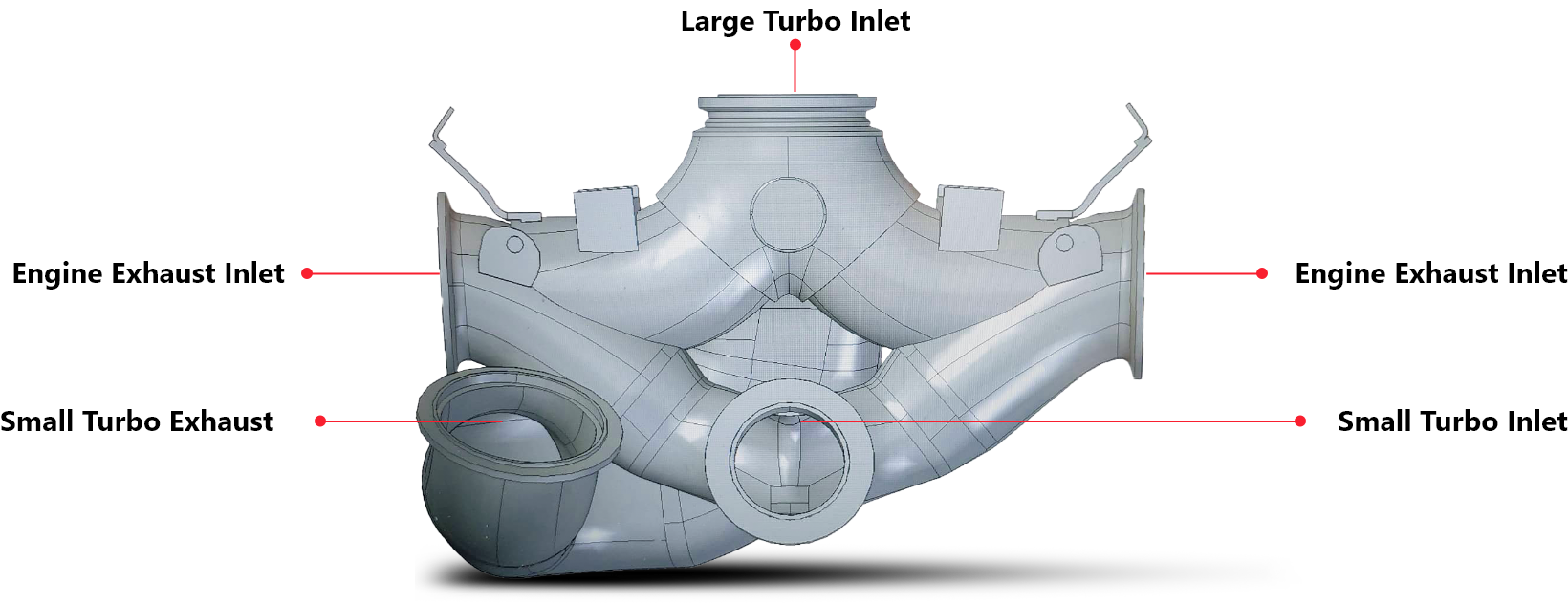


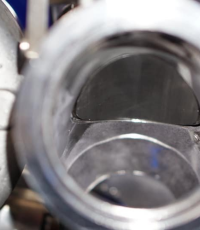
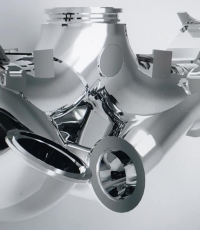
Introducing the revolutionary TRULY functional, UNIVERSAL Hlava Sequential Turbocharging Manifold! This patented manifold is a game-changer in the turbocharging industry, offering unparalleled performance and benefits.
With the right turbo pairing, this manifold provides an almost instantaneous turbo response, maintaining boost throughout the entire RPM range. Unlike any other manifold, it optimizes the exhaust usage from your engine, ensuring maximum efficiency and power.
Gone are the days of needing a wastegate. Instead, this manifold incorporates two bypass valves, allowing excess exhaust gas to bypass the first smaller turbo once it reaches its peak efficiency point on its designated map. The gas then continues on to the larger 2nd turbo, pushing it towards its peak efficiency as well. This ingenious design keeps exhaust manifold pressure low, benefiting both your engine and turbos, making them happy and prolonging their lifespan.
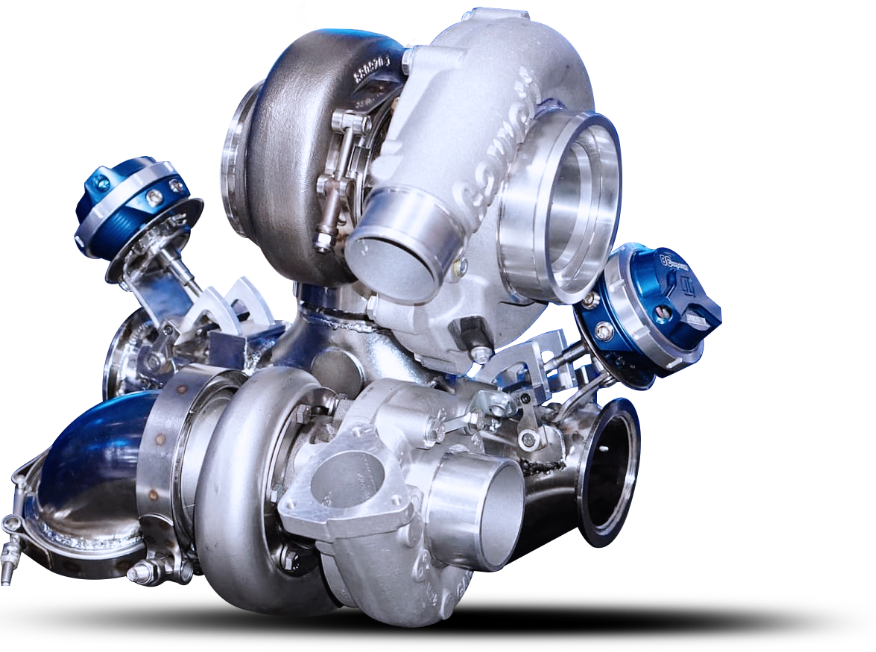
Turbochargers are, by design, natural restrictors to an engine. With this manifold, that is no longer the case! Increase your engines fuel efficiency capabilities while allowing your engine to exhale all it can up top without having the current restrictions you see with forced induction systems today. Power limitations set forth by engine build, not the turbocharger.
Hlava Sequential Turbo Manifold setup in compact engine bay of 1995 Mitsubishi 3000GT VR-4
No anti-lag. No heavy throttle. Feel the turbo responsiveness, even under gradual acceleration
The Manifold Overview by Inventor and CEO Andrew Hlava
The Manifold Overview by Inventor and CEO Andrew Hlava
Hlava Sequential Turbo Manifold Boost control explained
MAP= Manifold Absolute Pressure
WG Press= Internal Pressure of Hlava Sequential Turbocharging Manifold
TrbSpd 2= Smaller GT2554R
TrbSpd 1= G30-900 with 1.21 A/R housing
*Data shown is from our vehicle setup. Results will vary per end user vehicle setup(eg turbocharger pairing, engine displacement, etc…)
We’re always looking for new opportunities and are comfortable working internationally. Please get in touch and one of our project managers will contact you about beginning the proposal process.
